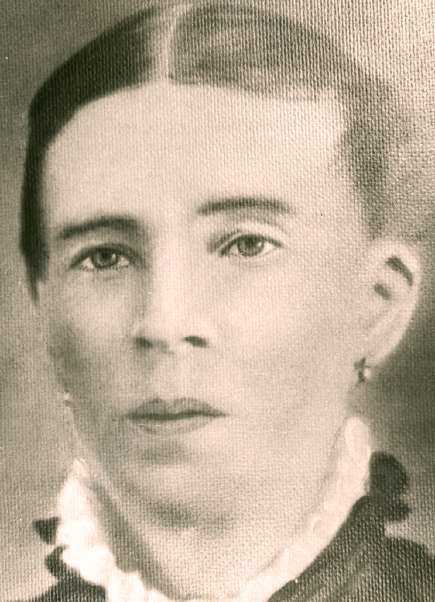History of Chehalis
A Look Back
Where it all began...
Chehalis boasts a storied history dating back centuries. Originally inhabited by the Chehalis people, the area later became a hub for logging and timber industries in the late 19th century, driving its growth. The town was officially incorporated in 1883. Over the years, Chehalis has witnessed economic shifts, including the rise of agriculture and railroad transportation. It also faced challenges, such as floods that have periodically affected the community. Despite these obstacles, Chehalis persevered, evolving into a vibrant city known for its historic charm, cultural heritage, and scenic beauty, attracting visitors and residents alike to its welcoming streets.
Eliza Barrett: Forgotten Founder of Chehalis
Eliza Tynan Saunders Barrett (1824-1900) is unrecognized today for the pivotal role she played in shaping the urban form of modern Chehalis. The present site of Chehalis is largely located on land once owned by Eliza Barrett and her husband Schuyler Saunders. Following her divorce from Saunders in 1859, Eliza controlled over three hundred acres of land in Chehalis, and for almost forty years her decisions about land speculation and development guided urban growth.
Evolution of the Downtown District
Eliza Barrett: Forgotten Founder of Chehalis
Eliza Tynan Saunders Barrett (1824-1900) is somewhat unrecognized today for the pivotal role she played in shaping the urban form of modern Chehalis. The present site of Chehalis is largely located on land once owned by Eliza Barrett and her husband, Schuyler Saunders. Following her divorce from Saunders in 1859, Eliza controlled over three hundred acres of land in Chehalis, and for almost forty years, her decisions about land speculation and development guided urban growth.
Evolution of the Downtown District
Self-Guided Historic Chehalis Walking Tour
Discover the charming town of Chehalis through Experience Chehalis’s Historic Walking Tour. Follow along on your mobile device. Choose to read along or utilize the narrated version. You can also pick up a copy of the printed guide at Book ‘N’ Brush, the Lewis County Historical Museum or Chehalis Timberland Library.
As participants embark on this experience through downtown Chehalis, they will follow a curated narrative that brings the community’s history to life. The walking tour guide expertly leads visitors by significant buildings and hidden gems, providing insightful commentary at every turn. Each stop on the tour reveals a different chapter of Chehalis’s evolution. Participants are transported back in time, witnessing the triumphs and tribulations that shaped Chehalis into what it is today. The guide paints a vivid picture of a colorful past, connecting visitors with Chehalis’s heritage. Whether a history enthusiast or a casual observer, the Chehalis Historic Walking Tour Guide promises an enriching experience that resonates long after the journey ends.
Lace up your walking shoes and get ready for a journey through time on the Historic Chehalis Walking Tour!
Experience the Lewis County Historical Museum
Located at the north end of downtown Chehalis, the Lewis County Historical Museum is a center of of Lewis County’s rich heritage, offering visitors a comprehensive exploration of its cultural, economic, and social evolution. Housed in the former 1912 Northern Pacific Railroad Depot, you are immediately greeted by meticulously curated exhibits spanning the area’s history, from the indigenous peoples who first inhabited the land to the settlers who carved out a living amidst the wilderness.
The museum’s diverse collections showcase artifacts, photographs, and interactive displays that vividly portray the everyday lives and extraordinary events that have shaped the region. From logging and lumbering to agriculture and industry, each exhibit illuminates the ingenuity and resilience of Lewis County’s inhabitants. interesting displays depicting early settlements and pioneer life in Lewis County, the oldest county in Washington State! A kids’ favorite is the large, functioning model train display.

 Eliza Tynan Saunders Barrett (1824-1900) is unrecognized today for the pivotal role she played in shaping the urban form of modern Chehalis. The present site of Chehalis is largely located on land once owned by Eliza Barrett and her husband Schuyler Saunders. Following her divorce from Saunders in 1859, Eliza controlled over three hundred acres of land in Chehalis, and for almost forty years her decisions about land speculation and development guided urban growth.
Eliza Tynan Saunders Barrett (1824-1900) is unrecognized today for the pivotal role she played in shaping the urban form of modern Chehalis. The present site of Chehalis is largely located on land once owned by Eliza Barrett and her husband Schuyler Saunders. Following her divorce from Saunders in 1859, Eliza controlled over three hundred acres of land in Chehalis, and for almost forty years her decisions about land speculation and development guided urban growth.